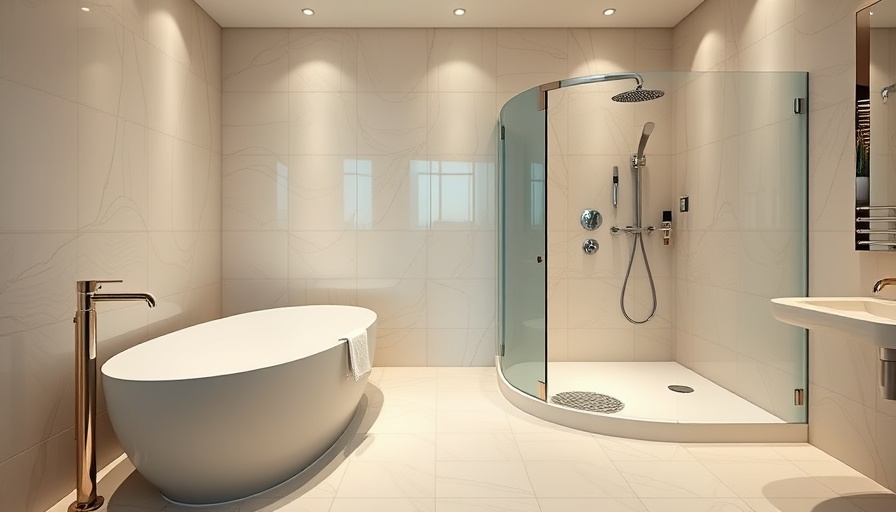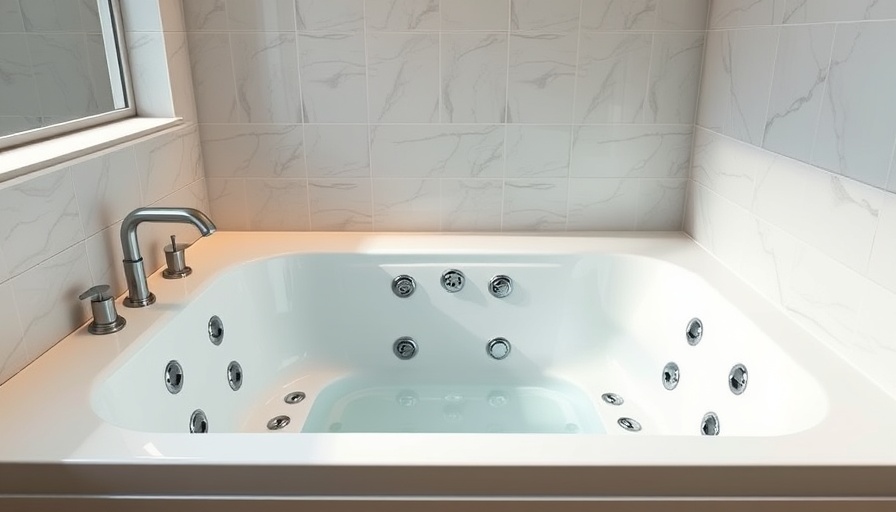
Step In or Step Away: A Deep Dive into Walk-In Tubs vs. Traditional Showers
Choosing between a walk-in tub and a traditional shower is more than just a design decision; it's about enhancing safety, comfort, and overall well-being in the bathroom space. As we age, the need for accessible options becomes more pronounced, making it imperative to understand the subtle nuances between these two popular bathing options.
Understanding Walk-In Tubs: More Than Just a Bathtub
Walk-in tubs are tailored to meet the needs of seniors and those with mobility challenges. With a low entry threshold designed to make access easy, these tubs reduce the risk of slips and falls, a crucial consideration for anyone concerned about bathroom safety. In addition to their accessibility features, many walk-in tubs also offer hydrotherapy options, helping alleviate muscle stiffness and promoting relaxation. This therapeutic experience can be vital for those managing chronic pain conditions. Furthermore, the built-in seating and grab bars contribute to a secure and comfortable bathing environment.
The Lasting Appeal of Traditional Showers: Convenience Meets Style
While walk-in tubs are designed with safety in mind, traditional showers boast convenience and versatility, making them suitable for a quick wash after a busy day or an indulgent spa-like experience. Traditional showers accommodate various designs—from compact spaces in urban apartments to expansive luxury enclosures in suburban homes. Homeowners can enhance the traditional shower experience with options like handheld showerheads, rainfall fixtures, and multiple body sprays, tailoring their bathing to personal preferences.
Safety Considerations: Walk-In Tubs vs. Traditional Showers
Safety is paramount when choosing between these two options. Walk-in tubs stand out with features specifically designed to mitigate falls, such as non-slip flooring and strategically placed grab bars. For seniors or anyone with mobility concerns, these features can be a game-changer. In contrast, traditional showers require careful consideration in design to ensure safety. Homeowners must think proactively about incorporating safety upgrades, such as grab bars or curbless entries to facilitate ease of access for high-risk individuals.
Comparing Costs: Long-Term Savings with Each Option
An important aspect to consider when evaluating walk-in tubs versus traditional showers is their respective costs—not just in terms of installation but also long-term maintenance. Walk-in tubs, while more expensive initially due to their specialized design, can provide health benefits that potentially reduce medical expenses over time. However, traditional showers typically require less maintenance and fewer repairs, making them economically attractive over the years. Exploring financial incentives for aging in place can also provide opportunities to offset renovation costs.
Emotional Impact and Lifestyle Adaptation
Beyond the physical aspects and design, the emotional and psychological impacts of bath options cannot be overlooked. For many seniors, the ability to bathe safely can significantly enhance their sense of independence and dignity. Adopting a walk-in tub can transform a potentially hazardous activity into one of comfort and ease. On the other hand, for younger, more active individuals, traditional showers provide a sense of speed and agility that aligns with their dynamic lifestyles. It's essential to reflect on what bathing represents for both the individual and their caregivers.
Final Insights: Making the Right Choice for You
The choice between walk-in tubs and traditional showers will largely depend on individual circumstances. Factors such as mobility, lifestyle preferences, budget, and safety needs must be critically evaluated. Consulting healthcare professionals when making this decision can reveal additional insights that align with health objectives. Each bathing option presents unique advantages; understanding these can empower homeowners in their renovation choices.
As we draw to a close, it’s essential to weigh the options carefully—personal safety and comfort should always come first. Whether you decide on a contemporary walk-in tub or opt for a traditional shower, ensuring that your bathroom aligns with your needs can bring peace of mind and enhance daily living.
Ready to transform your bathroom based on your needs? Contact us today to explore your options!
 Add Row
Add Row  Add
Add 




Write A Comment